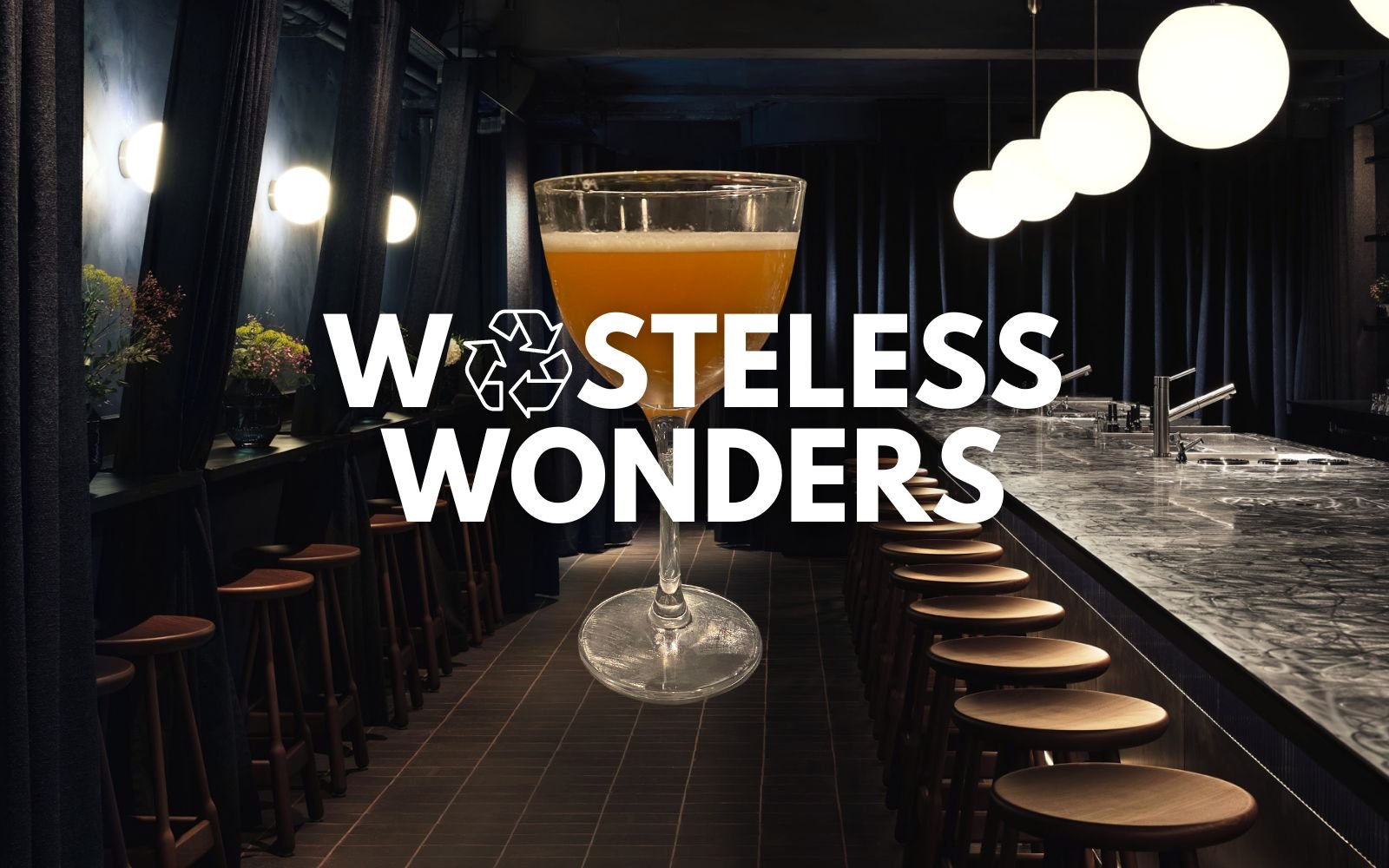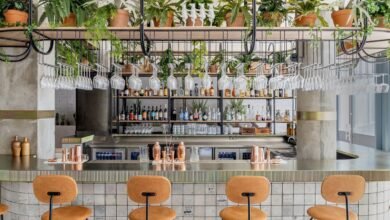
With a little creativity, these restaurants and bars are fighting back against food waste
Even for those venues that don’t advertise themselves as sustainable or eco-minded, sustainability is one of the most important elements of a business’ operation. Times are precarious for everyone in hospitality – the industry is still feeling the effects of Brexit and Covid while also having to contend with the rising cost of living – so making sure waste is minimised means money isn’t going down the drain when it doesn’t need to.
Of course, the environmental considerations are just as significant. Intensive agriculture is polluting the environment, shipping ingredients thousands of miles pushes carbon emissions up, and when food does go to waste, it produces methane, another major greenhouse gas, as it rots. Thankfully, there are kitchens and bars in the city that repurpose ingredients destined for the bin into something tasty and turn trash into treasure. Here are our fave Wasteless Wonders in London.
SOMA
SOMA in Soho is the Kricket team’s minimalist take on a speakeasy, serving cocktails inspired by the Indian subcontinent. As well as looking the part (a little dark, a little mysterious, dominated by a nine-metre long steel bar), there’s a real effort on keeping the amount of waste produced as low as possible. The bartenders do that through some creative repurposing, like dehydrating leftover fruit skins and turning them into flavoured salts and pickling ingredients to be used as garnishes.
The Banana, one of the first drinks created for SOMA, is a take on a banana daiquiri that makes use of the whole fruit. Banana skins are acidified until they turn black, to draw out their natural sweetness, and then made into a cordial along with a curry tincture. That’s then shaken with Discarded Banana Rum, itself a product that makes use of leftover banana peels, and finished with a cumin spray.
Apricity
Chantelle Nicholson runs her Mayfair restaurant Apricity with a very clear purpose in mind – to operate in an as circular and sustainable way as possible, which is why it’s the holder of a Michelin Green Star.
Every element of the business is optimised to achieve this, from using reusable crates for deliveries to saving paper with digital menus to cutting down on single use items (there’s no clingfilm in the kitchen and the team uses reusable piping bags and compostable vacuum bags). They also try and repurpose every scrap of food, either in staff food, in cocktails or in brand new dishes.
The seeded cracker and ‘wasted’ dip is one such example of this philosophy; leftover bread crusts are soaked in water, spread onto a sheet, seasoned, spiced and baked until crispy, and served with leftover veg that’s turned into a dip. Not only is it great from a zero waste perspective, it also creates revenue from something that would have gone in the bin.
The bar also has a sustainable ethos, using trims and syrups from the kitchen and pickling juice in place of citrus as it doesn’t tend to grow in the UK. The homemade sweet vermouth makes use of leftover red wine and turning by-the-glass options that wouldn’t last over the days the restaurant is closed into something usable and tasty. The wine gets cooked down into a caramel, spiced with things like chamomile tea and willow tree bark, and then lengthened with a fortified spirit like golden rum. It can be served as a drink in its own right but also appears in cocktails like Manhattans and Beetroot Negronis.
Acme Fire Cult
After popping up in London Fields in 2021, Andrew Clarke and Daniel Watkins took their live-fire concept Acme Fire Cult permanent by teaming up with Steve Ryan of 40FT Brewery and opening a restaurant next to the Dalston brewery.
The collaboration between Acme and 40FT is a central part of keeping the operation sustainable; as well as centring vegetables and using sustainably sourced fish and regeneratively farmed native and rare breed meat, the kitchen uses by-products from its neighbours in an effort to reduce waste. They also have a ferment room, headed up by Daniel, where the team are able to divert ingredients that would otherwise end up in the bin, like spent grain and leftover bread, so they can be turned into things like miso and nukazuke pickles.
One of the best ways that the Acme kitchen repurposes waste is by turning leftover brewer’s yeast from 40FT into Acme ‘Marmite’. It’s saltier and more flavourful than regular Marmite, so it’s put into butter, slathered over toasted day-old Dusty Knuckle sourdough (the restaurant’s other neighbour), and covered in pecorino. Not only does this dish encapsulate Acme’s ethos, it’s become one of their most popular dishes, with 40-50 portions going out during a busy service.
Spring
As well as celebrating the best seasonal produce, Skye Gyngell’s Spring, located inside Somerset House, is committed to sustainability. Not only is the restaurant single-use plastic-free, Skye is fighting the scourge of food waste through the Scratch menu, which was first launched at the restaurant in 2016.
The Scratch menu, served Tuesday – Saturday from 5.30pm – 6.30pm, is £30 and features three courses made from ‘waste’ produce. Things like pasta cut-offs, leftover bread, veggie tops, herb stems, egg whites, fish tails, and meat trimmings are transformed into simple, nutritious and delicious dishes.
The menu changes daily as it’s dependent on what surplus produce is available, but it can include the likes of pasta rags with fennel outers and cauliflower leaves; lamb polpette with leftover beans, green stalks and pangrattato made from bread crusts; and meringue with spent rhubarb and citrus ice cream, made using rhubarb pulp and leftover citrus juices and peels, showing that perfectly edible ingredients that would normally go straight for the bin still have value.







